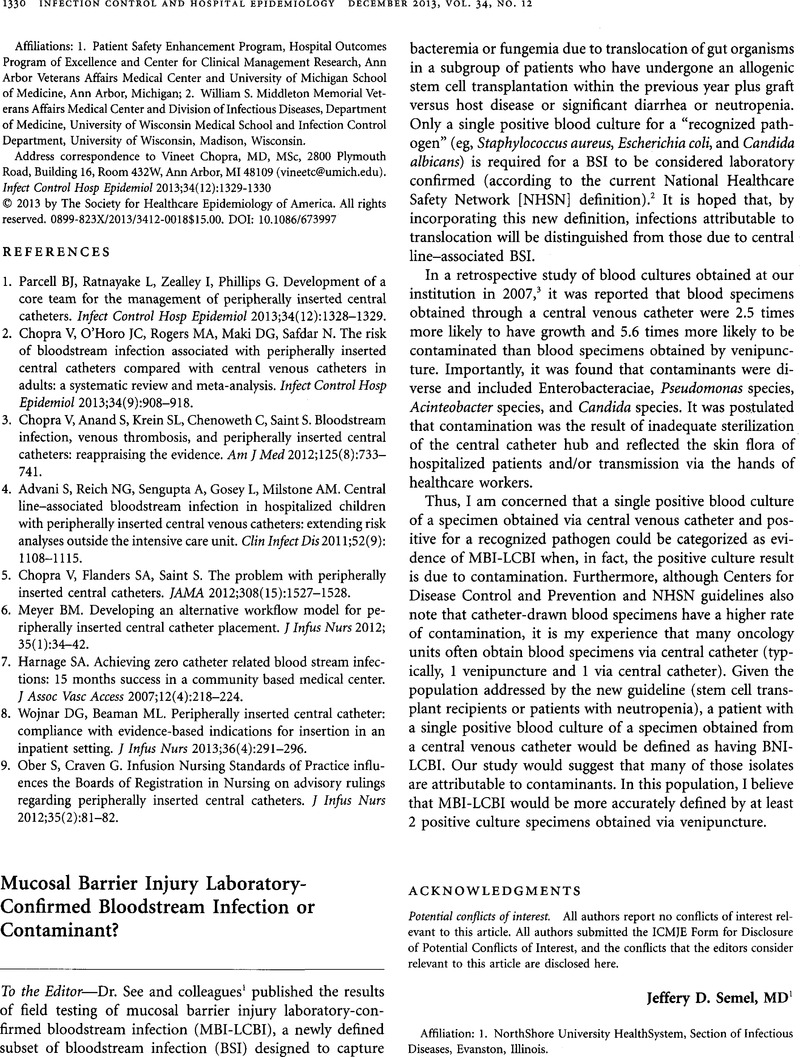No CrossRef data available.
Article contents
Mucosal Barrier Injury Laboratory-Confirmed Bloodstream Infection or Contaminant?
Published online by Cambridge University Press: 02 January 2015
Abstract
An abstract is not available for this content so a preview has been provided. As you have access to this content, a full PDF is available via the ‘Save PDF’ action button.

- Type
- Letters to the Editor
- Information
- Copyright
- Copyright © The Society for Healthcare Epidemiology of America 2013
References
1.See, I, Iwamoto, M, Allen-Bridson, K. Mucosal barrier injury laboratory-confirmed bloodstream infection: results from a field test of a new National Healthcare Safety Network definition. Infect Control Hosp Epidemiol 2013;34(8):769–776.Google Scholar
2.National Healthcare Safety Network. Central line-associated bloodstream infection (CLABSI) event, http://www.cdc.gov/nhsn/PDFs/pscManual/17pscNosInfDef_current.pdf. 2013. Accessed October 24, 2013.Google Scholar
3.Semel, JD, Robicsek, A. Contamination of catheter-drawn blood cultures (CDBC):incidence and microbiology. In: Program and abstracts of the 46th Annual Meeting of the Interscience Conference on Antimicrobial Agents and Chemotherapy (ICAAC)/Infectious Diseases Society of America (IDSA). Washington, DC: ICAAC/IDSA, 2008. Abstract K-3397a.Google Scholar
A correction has been issued for this article:
Linked content
Please note a has been issued for this article.




